|
|
||
|
|
|
|
|
|
 History  The church's name is Venetian dialect for San Giovanni Novo. To distinguish the church from others of the same name it was called San Giovanni in Oleo - Saint John in Oil - because Saint John the Evangelist miraculously survived being boiled in oil at the orders of Domitian. The original church was founded in 968 by the Trevisan family. First mentioned in a document of 1163. It acquired the name Novo when it was rebuilt in the 12th century, to be reconsecrated in 1463. The church was demolished and rebuilt in 1751-62, on the same site and with the original orientation, to a design by Matteo Lucchesi, who was Piranesi's uncle. He modelled it on the Redentore, although it is smaller and in a more cramped space. The façade is unfinished, though, having been built only to head height. Interior A single nave with a square chancel and a barrel-vaulted ceiling and a pair of altars on each side. The high altarpiece is a late-18th century painting of Saint John the Evangelist in a Cauldron of Boiling Oil by Francesco Maggiotto whose work can also be found in the Scuola Grande di San Giovanni Evangelista, San Geremia and San Francesco della Vigna. He trained with Michelangelo Morlaiter and his own pupils included Lattanzio Querena and Francesco Hayez. This high altarpiece is said to be flanked by smaller panels of the Sacrifice of Abraham and the Sacrifice of Melchisedech by Fabio Canal. Lost art Two crucifixes, one described as Venetian, the other as Venetian-German, and airily dated as 'between the 14th and 15th centuries' are in the Venice Diocesan Museum of Sacred Art. Vivaldi connection Vivaldi began his training for the priesthood the age of fifteen and ten years later, on the 23rd of March 1703, he was ordained. He said his first mass in this church, where some of his training had taken place too. He said very few more, as music and the Pieta became the centre of his life merely months later. Local celebrity Famed courtesan and poet Veronica Franco was living in a house nearby when summoned by the Inquisition in 1580. Campanile De Barbari's map (and the map of 1635 see right) show an impressive tall structure with an octagonal drum and a spire. This tower was demolished in 1762 and replaced with a Roman-style campanile, by Matteo Lucchesi too. Opening times Never - long deconsecrated, the building's last reported planned use was (yawn) to be converted to an art gallery. Vaporetto San Zaccaria map |
||
|
San Zanipolo |
||
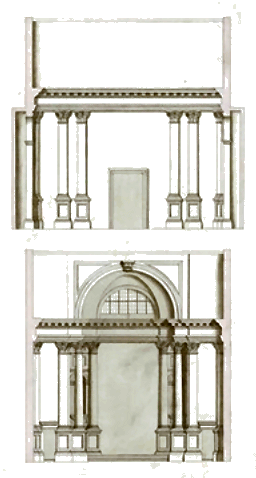 History This church was founded with its convent in 1242 by Augustinians who dedicated the church to Saint Anne and Saint Catherine. It passed to Bendictines in 1297, who took up residence in 1305. The Benedictine convent was prosecuted for carnal acts in 1491. In 1519 Augustinians returned, when nuns from the convent of San Giovanni Lateran transferred here. The current church dates from rebuilding in 1634-59 by Francesco Contarini after which it was reconsecrated and dedicated to Saint Anne. During the plague of 1630-31 workers from the Arsenale made a substantial donation to the convent of Sant'Anna, paying for the chapel to the right of the main altar in the church and an altarpiece depicting Christ, the Virgin and Saints Rocco, Anna, Sebastiano and Lorenzo by Giovanni Battista Lorenzetti, an artist from Verona who also has works in the Palazzo Ducale. Two of Tintoretto's daughters, called Sister Perina and Sister Ottavia, were nuns here. The church and convent were both suppressed by the French in 1807, with the 31 nuns moving to San Lorenzo. After suppression the convent (which stretches along the canal to the left of the apse) became a college for naval cadets, then a barracks in 1850 (with the church used as a gymnasium) and a hospital in 1867, but always run by the navy. They gave up the buildings in 1986 and the site now has blocks of flats, with a few columns and such kept from the original convent buildings. The church itself is now also owned by the local authority and long-awaiting money for restoration and structural repairs. It looks like the church has been divided into two spaces by a false ceiling. In November 2008, 55 square meters of the church's decorated ceiling collapsed. It was recently (September 2009) pressed into use merely to store the lumber and rubble created by the nearby building work. 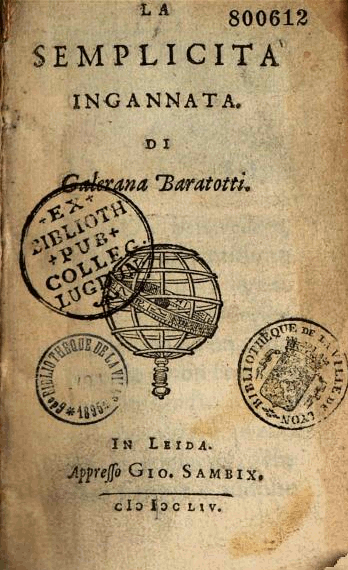 Arcangela
Tarabotti Arcangela
TarabottiElena Cassandra Tarabotti was born in Castello in 1604 with a congenital disability. She was brought to the convent here at the age of eleven as her marriage prospects were though to be slim. She had taken her vows by the time she was seventeen, taking the name Arcangela, but she did not passively accept her fate. She educated herself in her confinement and wrote a number of books, including Inferno Monacale (Convent Hell) and Tirannia Paterna (Paternal Tyranny). The latter was published in 1654, two years after her death, retitled La Semplicita Infannata (Simplicity Betrayed) and under an anagrammatic pseudonym, Galerana Barcitotti. In it she particularly protested the incarceration of young women with no vocation for purely financial reasons and the subjugation of women to the will of men generally. She condemned the misogyny at the heart of the central story of Adam and Eve, and its malignant influence. 'You vain men hate women's beauty because your impure hearts prevent you from enjoying her presence without lust'. The book was condemned by the Inquisition in 1660, needless to say, and placed on their list of banned books. Lost art In 1733 Zanetti reported, over the first altar on the left, a Holy Trinity, Virgin and Saints Joachim and Anna by Domenico Tintoretto. The organ he said was painted by Pietro Vecchia, outside the doors having The Birth of the Virgin, with inside The Wedding, and The Death of Saint Joseph. On the parapet The Nativity and on the sides The Annunciation with the (organ loft?) ceiling painting being of Saint John the Baptist Preaching in the Desert. To the right of the high altar, which featured statues of God the Father and angels by Bartolommeo Scaligero was Christ, the Virgin and Saints Anne, Roch, Sebastian, and Lorenzo Giustiniani by Giovanni Battista Lorenzetti from 1630. More statues of saints by Bartolomeo Scaligero are reported in the left side chapels, as well as two paintings, one of San Benedict and the other of Saint Scholastica, his twin sister, 'works in the manner of Tiepolo'. He also reports that Boschini said that the church had an altarpiece made of embroidery by the daughters of Tintoretto, Ottavia, and Perina, representing The Passion as painted by their father in San Rocco. Vasari mentions a Tintoretto painting of Emperor Octavian Augustus and the Tiburtine Sibyl painted for this church. It is now thought to have been possibly by a northern follower, but its whereabouts are unknown. Five altars taken from this church are now to be found in San Biagio. The ceiling of the church at one time (and still in the 17th century) contained painted scenes of The Parables of the Gospel of Matthew, attributed to Francesco Ruschi. This is presumably the ceiling that fell in in 2009. 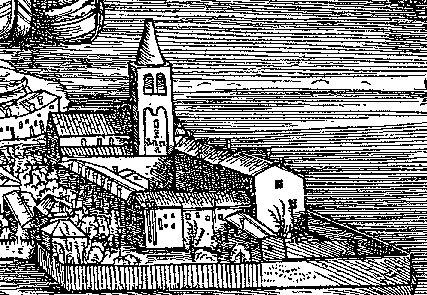 Opening times Never. It's a shameful wreck inside (see photo right). The website of Milan Ingegneria, the company that converted the convent into flats, reports that the project included the promise to turn the church into an 'auditorium with 462 places'. Vaporetto Giardini map
The original church, from the Barbari map. |
|
|
|
History The original church was founded, it is said, in the early 7th century by the Badoer family and dedicated to Saint Anthony Abbot, but the first certain documentation dates to 1147. The pig being the emblem of the saint, the monks at the attached monastery kept a herd of pigs that were allowed to wander so unchecked that a sumptuary edict was passed in 1409 to limit their unruly rootlings. The church was rebuilt from 1668 (and reconsecrated in 1680) to a design possibly by Longhena, although his façade was never completed. The church was deconsecrated and closed in 1982. In June 2010 the church reopened, after being closed for 28 years, and having undergone restoration work. Pre-booked visits were announced, but the Patriarchs' touristic website now gone silent on the subject. In 2013 and 2015 the church was used as a Biennale satellite site.  Interior A square aisleless plan with two chapels at the back, either side of the entrance hall, with an ornate organ above. Two deep chapels either side of the apse, which has a frescoed ceiling. There's a further deep chapel on the left side - The Chapel of San Saba (see right), belonging to the Tiepolo family, which has paintings of the saint's life by Palma Giovane (1593) (reinstalled in 2010, having been kept in Diocese Museum in Sant'Apollonia for a while) and stucco decoration possibly by Vittoria. Amongst the memorials is a bust of Procurator Alvise Tiepolo by Vittoria. The ceiling frescos are by a pupil of Ricci. The saint's body was once buried here, perhaps by order of Doge Lorenzo Tiepolo (1268-1272). But in 1965 Pope Paul VI returned the body to the monastery in Istanbul from which it had been looted by the Venetians. Lost art In his Companion Guide to Venice Hugh Honour says that there's a 'fantastic Sacrifice of Noah by Pietro della Vecchia (right of the high altar)'. This space is now empty. This artist (also known as Pietro Muttoni) was said to have been called della Vecchia for his emulation of the painting styles of his elders (and betters) which bordered on outright forgery. Later it turned out to have actually been his family name and that Muttoni was the name of the collection in which Lanzi, who had identified him in his Storia Pittorica della Italia, had seen one of his paintings. The Deposition by Lazzaro Bastiani (originally from the nearby, now demolished, church of San Severo) was transferred here, then taken to the nearby church of San Giovanni Battista in Bragora. Saints John and Luke by Giovanni Battista Tiepolo painted for this church is now lost. A statue of Saint Anthony, attributed to Alessandro Vittoria, is in the Sant’Apollonia Diocesan Museum of Sacred Art. Campanile 32m (104 ft) electromechanical bells 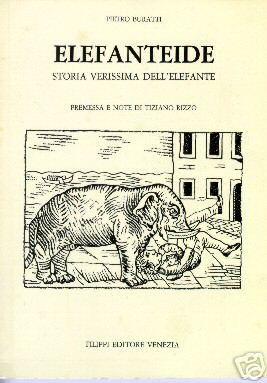 Struck by lightning in 1442 and rebuilt in the 18th century with an octagonal drum and onion dome. The odd elephant story In 1817 an elephant broke its chains on the Riva degli Schiavoni and ran amok up and down alleys, terrorising Venice for a whole day. It was finally cornered after it broke into Sant'Antonin and made a barrier of pews using its trunk. A falling beam trapped it and it was shot, using a cannon. Permission from the Patriarch had been granted first as the elephant may have been deemed to have been seeking sanctuary. Byron wrote about the episode in a letter to J.C. Hobhouse, and a local poet called Pietro Buratti used the episode to satirise the then Austrian government of Venice in an epic poem of more than 800 verses, making the elephant a symbol of persecuted nature. He was later imprisoned for a month for writing the poem. The elephant's carcass was taken to Padua University where the zoology department still have the skeleton. Opening times Rarely In June 2010 Sant'Antonin reopened, after being closed for 28 years, and having undergone restoration work. Pre-booked visits were announced, but the Patriarchs' touristic website now gone silent on the subject. In 2013 and 2015 the church was also opened as a Biennale satellite site.
Vaporetto San Zaccaria |
|
|
|
History Tradition says a church was built here in 1060. Written records show that a monastery and hospice was founded here in 1175. Doge Pietro Ziani had a church built here in 1205 and in 1211 the body of Saint Helena, the mother of Emperor Constantine, was buried here following its looting by Venetians during the sacking of Constantinople in the Fourth Crusade. Although elsewhere you'll read that her relics are in Rome. She is more revered in the Eastern Orthodox church, so this rare church in her name is further evidence of Venice's looking eastward. A papal bull of 1407 lead to the creation of a monastery for Olivetan Benedictine monks and building work, to designs by Giacomo Celega, with help from Bartolomeo Tesenato, was completed in 1439. More work followed, before the church was reconsecrated in 1515. The church and monastery were suppressed by the French in 1807 and, it is said, 102 paintings were stripped out. Helena's remains were removed to (the altar in the right transept of) San Pietro di Castello. Following use as a barracks, a bakery and an iron foundry (click here to read an article from 1883 condemning this last desecration) the church fell into ruin but was rebuilt in 1915, at the same time as local land reclamation work made its site part of the Venetian mainland. It was reconsecrated in 1929. Only one of its original three cloisters remain but has recently undergone restoration work (see photo below right). Façade Sparsely Venetian-gothic, with a doorcase that stands out a bit, featuring a lunette sculpture group from the early 1470s depicting Admiral Vittore Cappello paying homage to Saint Helena. This group spent some time in the late 19th/early 20th centuries on the façade of the church of Sant’Aponal in the sestiere of San Polo. It is attributed to Antonio Rizzo. Interior Plain, with an aisleless vaulted nave. Recently restored. Lost art Also in the Accademia is the main section of the Sant’Elena Polyptych (c. 1422-25, see below) by the Bolognese artist Michele di Matteo, which was originally sited in the chapel here dedicated to the saint to house her relics built in 1418-20 by Alessandro Borromeo. The altarpiece was commissioned by his nephew Galeazzo Borromeo. The central panel depicts the Virgin and Child Enthroned, flanked by four panels depicting female saints - Lucy and Helena on the left, Mary Magdalene and Catherine of Alexandria on the right. There's a Crucifixion in the upper level, flanked by panels of the four Evangelists. The predella has five scenes from the life of Saint Helen and her discovery of the True Cross. This section was restored in 2005. The altarpiece lost its pair of octagonal flanking pilasters, probably after the church's suppression when they were sold. Of the fifty-six full and bust length saints depicted on these pilasters thirty were, or are, in the Berlin Staatliche Museen - twenty-eight of these were deaccessioned in the late 19th century and many of these are now 'whereabouts unknown', one was sold at Christie's in London in 2015 and one is in the I Tatti collection. 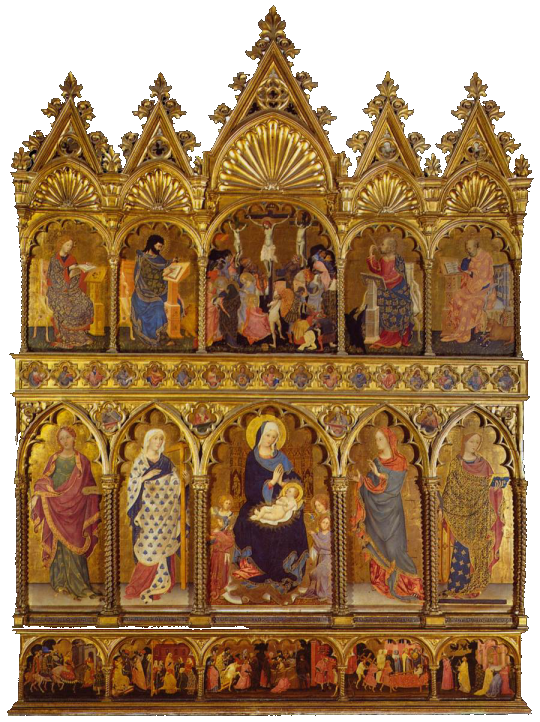 A serene and symmetrical c.1480 Nativity with Saints Jacob, Eustace, Nicholas and Mark by Lazzaro Bastiani with its carpentry-fresh manger; and Jacopo Moranzone's Assumption of the Virgin with Saints are both in the Accademia. Liberale da Verona, who did much work for the Olivetans in Siena and his native Verona, made an altarpiece for them here. The contract is dated 7th May 1487 but the work is lost. The wooden choir with 34 (intarsia?) panels depicting Venice scenes is now also lost. The Adoration of the Magi with Saint Helena of 1526, a tall altarpiece by Palma Vecchio, commissioned by the Malpiero family (and/or the Olivetan Benedictines) on 3 July 1525 is now in the Brera, Milan. It is one of only six of his works mentioned by Vasari and was restored in 2006-8. Saint Helena is shown somewhat insensitively holding up a cross just behind the Mother and Child.
Campanile
|
|
|
|
History The dedication name is the Venetian dialect version of San Giuseppe (Saint Joseph). The church was built largely between 1516 and 1525. Augustinian nuns were then brought from San Giuseppe in Verona to found a convent. Money was short, due to the drain of the war with the League of Cambrai, and so work was not fully completed until later in the 16th century, consecration taking place in 1543 and the work completed in 1563, with funds provided by the Grimani family. In 1801 the church and monastery were closed by Napoleon. Both church and convent were saved from demolition at this time by the intervention of Beauharnais. Salesian nuns took up residence a little later, bringing the relic of the heart of Saint Francis de Sales from Lyon to save it from French revolutionaries. Three cloisters still exist and are now home to the Sebastiano Venier Nautical Institute.
Façade
Opening times
Vaporetto Giardini |
|
|
|
History Named for Saint Justina of Padua, who was said to have been martyred in 304 AD, tradition says that this church was one of those founded by Saint Magnus in the 7th century, but written records date from 1106. The stone where Santa Giustina knelt for her martyrdom was brought here. Following the arrival of Augustinian nuns in 1448 the church was rebuilt in 1514 and, at the behest of Giovanni Soranzo to commemorate his family, a new façade by Longhena was added in 1640. The Doge visited the church, and a mass was celebrated, on the saint's day (7th October) every year from 1572. This was to commemorate Venice's victory over the Turks at the Battle of Lepanto on the saint's day the year before and her subsequent adoption as a patron saint of Venice. Specially minted coins, called Giustine, were also given to the nuns. The saint herself also then began to turn up more frequently in Venetian art in celebration of the victory - Veronese's Allegory of the Battle of Lepanto, painted for San Pietro Martire on Murano, being a good example. The church and its convent (to the left) were suppressed in 1810 and most of the convent, and the campanile, were demolished later in that century. The stone where Santa Giustina knelt for her martyrdom and the body of Santa Cristina, martyred at 13 in 297, were taken from this church to San Francesco della Vigna and the church's Baroque high altar ended up in Sant'Aponal. In 1844 the church and what remained of the convent was converted into a school for sailors, the church being split into two floors. Since 1924 it has housed a school called the Liceo Scientifico Giambattista Benedetti. The façade The Longhena façade remains, although alterations by Giovanni Casoni when the church was converted for use as a school led to its curved pediment (see prints below) being chopped off and an attic installed. Busts of the Soranzo family by Clemente Moli on the sarcophagi on the façade became so corroded that they were removed. Lost art The Angel Offering a Skull to Saint Justina, who stands between Saints Joseph and John (1640) by Pietro della Vecchia is now in the Accademia in the new rooms dedicated to 17th & 18th century religious art on the ground floor which were opened in 2021. It formed a pair with another canvas by the same artist showing Doge Alvise I Mocenigo Kneeling before Santa Giustina, with a text relating to the Venetian victory at the battle of Lepanto, which happened on her day. Three panels, depicting Saint Justina flanked by Saints Gregory and Augustine by Cima da Conegliano are in the Brera, Milan. Saints Augustine and Jerome, two more panels from the same polyptych, are in the Accademia in Venice. The high altar, and a painting The Martyrdom of Sant'Apollinare by Lattanzio Querena, taken from here was installed in the church of Sant'Aponal when the latter church was reconsecrated and reopened in 1851. Saint Augustine, one of the saints from the upper tier of a c.1468 polyptych by the Bolognese painter Marco Zoppo that was once over the high altar here, is now in the National Gallery in London. Said to have come from the same altarpiece are a Saint Paul in the Ashmolean Museum in Oxford, a Saint Peter in the National Gallery in Washington, and a Saint Jerome in the Walters Art Gallery in Baltimore. Not unusually Jerome's cardinal's red robes and hat feature, despite these not being instigated until 700 years after Jerome's time, by Pope Innocent IV. And Jerome never having been one. Paintings by Palma Giovane and Sante Peranda from the underside of the nuns' choir, including the main Resurrection of Christ by Palma, are now lost. Relics Aside from the stone on which Saint Justina was martyred (mentioned above) the bones of Saint Luke also once rested here. In 1463 both Venice and Padua clamed to have the body of the Apostle. Both sets of bones were exhumed and found to have belonged to a young man in the case of Venice's body, and an old man in the case of Padua's, missing his head which was said to be in Rome. The Padua bones were therefore declared to be authentic. Venice challenged the pronouncement so strongly that excommunication was at one point threatened to anyone who promoted the validity of Venice's relics. They were enshrined above an altar in a side chapel here in a tomb of blue stone. The church in books In his Italian Journey Goethe writes an account of the ceremonial visit here of the penultimate Doge in 1786. In The Mirror Thief by Martin Seay the Lepanto-haunted hero ...has no intention of stopping in the church but somehow winds up in there anyway, weaving from sunbeam to mote-dusted sunbeam across the broken floor of the nave. He then remembers how the crew prayed to Santa Giustina before the carnage commenced.
Vaporetto
Celestia
|
|
|
|
History A church and hospital (called the Hospice of Saint Peter and Saint Paul) were built here at the beginning of the 11th century to shelter pilgrims. Then the complex was occupied by an order of Franciscan nuns, who all died in the plague of 1630, except for a nun called Domenica Rossi. The buildings later became a hospital and hostel for the poor. The church, originally dedicated to Saint Joachim, was renovated between 1648 and 1736. It contains an 18th-century altar with high-relief carving of The Last Supper, and was also once known for a wooden crucifix, now no longer to be seen in the church, which was suppressed in 1807. Zanetti in 1773 identified the altarpiece as The Virgin and Child with Saints Peter and Paul, the hospital's dedicatees, by Mattia Bortoloni, an artist who began his career with Antonio Balestra in Verona and whose work was, before 20th-century scholarship, frequently mistaken for the work of Tiepolo. Considerable restoration to the whole complex between October 1996 and January 1999. The hospital was taken over by the Maria Ausiliatrice Institute and is now a student residence, with the church used for exhibitions, especially during the Biennale. Ausiliatrice translates literally as female helper, or protectress. 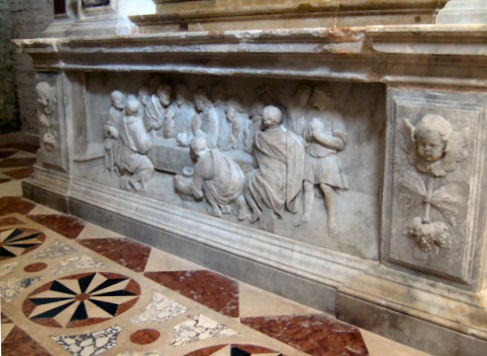 Opening times Used for art exhibitions, especially in Biennale years, usually by Wales. Vaporetto Giardini
Interior
photos by Brigitte Eckert.
The church of San Gioacchino, the church's previous name, is
to the top right in the above map.
It's on the a canal that was later mostly filled in to make the via Garibaldi. |
|
|
|
|
|
|
|
History 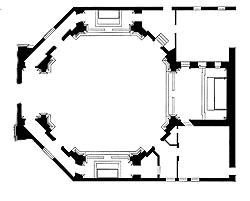 This octagonal church, which faces the lagoon, and its monastery of Capuchin Franciscans were founded in 1649 and the church was consecrated in 1687. Mother Maria Benedetta de Rossi had had a vision - she had many - and Doge Francesco da Molin and the senate approved the building, in 1646, hoping to invoke divine assistance in the war in Crete. The architect was Francesco Contino (and not Longhena, as you might read elsewhere) who may have been inspired by the octagonal shape of the, then new, Salute church. The church, finished in 1658 and consecrated in 1687, was named for Santa Maria dei Pianto dei Sette Dolori, the Weeping Madonna of the Seven Sorrows, and Saint Joseph. Much restoration work in the 18th century, mostly on the leaky roof and following a fire in 1748, started by a boy smoking a pipe. The complex was suppressed in 1810 and the contents stripped. The monastery was bought in 1814 by Abbott Antonio de Martiis for use as a boys' school, with a girls' school added later. The church had a false floor installed, with the top floor becoming a small theatre and the lower a pottery and private residences. It has also been used as a barracks and for maritime storage, but it was restored in 1842 and reconsecrated on August 21st 1851 when abbot Daniele Canal bought the buildings to open a school and hospital for poor girls, which was still functioning in the 1960s, until the departure of the nuns in 1970. He also bought back three of the original altars from the Austrians and the floor from the demolished church of Santi Biagio e Cataldo on Guidecca. The complex is now owned and used by the Ospedale SS. Giovanni e Paolo who have allowed the church and its campanile to fall into sad ruin. The income-generating cloisters however now house student and visitor accommodation and conference and educational facilities. 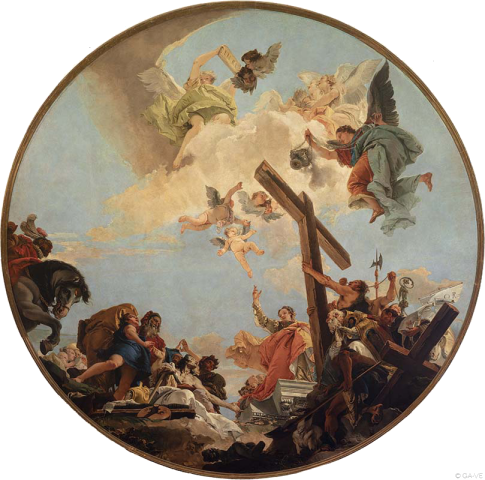
Lost art
|
|
|
|
Santa Maria della Fava |
||
|
Vaporetto Rialto Opening times
Update November 2021 |
|
|
|
|
|
|
Cannaregio
:: Castello :: Dorsoduro
:: Giudecca :: San Marco
:: San Polo :: Santa Croce
:: The Islands :: Demolished